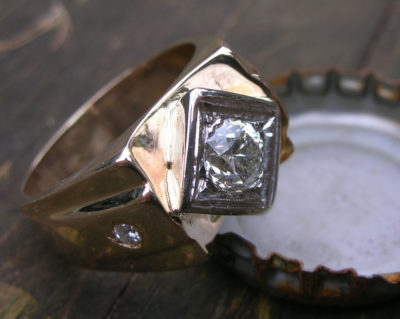 Identifying Bottle Caps
Identifying Bottle Caps
I thought it would be a good idea to write a separate section on identifying the ever-present bottle cap. One reason is because firstly many caps have a nice spongy sound that can initially be mistaken for gold. Secondly, with its multiple frequencies, the Excalibur readily latches on to the varied metals that bottle caps contain. However, it is the way that the detector acquires and leaves the cap signal that makes them identifiable. The Excalibur gets its discriminate accuracy by grouping targets into the frequency ranges that they occupy. With a cap, these are many; meaning that the detector has to work hard to make these multiple classifications. This causes a difference in the signal tone. Caps come in one of two ways. Shallow ones sound abrupt, with multiple tones entering at once. The deeper, rusted ones are long, drawn out signal–usually more recognizable as something that is not completely non-ferrous. Both will have multiple “notes” or pitches in the tone. As the detector tunes to the most central frequencies of the target the tone becomes smoother and even more likely to fool you, but in your initial passes where it is being compared to more of the surrounding ground, these multiple tones can be heard. This is the same “defining” effect that makes a coin sound cleaner and higher as you “wiggle” the coil across it.
Bottle caps can also be identified by how their varied composition causes them to enter the detection field. The detector must work hard to gather in a reading on all these metals and produce a tone response. This takes time and with practice it is possible to recognize the “lag” in response time when the coil is swept over a cap. Coins, gold and other objects which are not such diverse alloys respond more quickly and cleanly.
Another way to identify caps is that because they are composed of so many metals, the Excalibur does not always choose the same one to report. Changing your sweep speed and angle will often produce these different tones.
Identifying caps by tone and signal characteristic is something that is definitely worth putting in some time at the bench to learn. Side-by-side tests over ground are a good idea too, because these are basically coil control methods.
As well, the steel, tin and or rust in a cap are similar to the ground. This causes the signal to have a unique quality that results from the detector attempting to separate ground from target. The signal:
- Drops at the ends as the ground / steel distinction is reported.
- Has a clipped tone as the machine tunes out the steel (rather than the target’s natural “ramp up / ramp down).” In a sense the detector’s circuits shut out the target at the point where it resembles ground too much.
Most bottle caps also are what can be called a “radiating” signal, in that instead of being a smooth tone arc, more of the response is in the rough drawn-out edges that are this interaction between iron / steel and ground. Understanding how this “radiation” operates is the key to identifying most iron by using observing if the signal appears to move when approached from various angles. More on this below. Several hunters report that although they can readily identify a cap by its tone with the 10’ coil (described as a”broken crackle),” but with a larger coil, they sound like good targets. This is because the larger coil is reading more ground and reducing this down (confusing ground and steel) into a solid-sounding signal, whereas the smaller coil makes the distinction more cleanly. Some caps are high in aluminum content and will just plain sound good. In particular, one green-bottle premium beer brand makes caps that sound very close to a completely non-ferrous target and in fact, digging them is a good sign that you are accurate in making this important distinction.
Developing your ability to recognize bottle caps is a very important skill because there are just so many of them at most sites. There are also a lot of varieties of them. As with many problem targets, although there is no one “iron-clad” cap identifier, understanding these general principles and observing the sum total of a signal’s features will help you to make accurate calls.
From: “Beach, Inland and Shallow Water Treasure Hunting with the Minelab Sovereign Series Metal Detectors” by Clive James Clynick